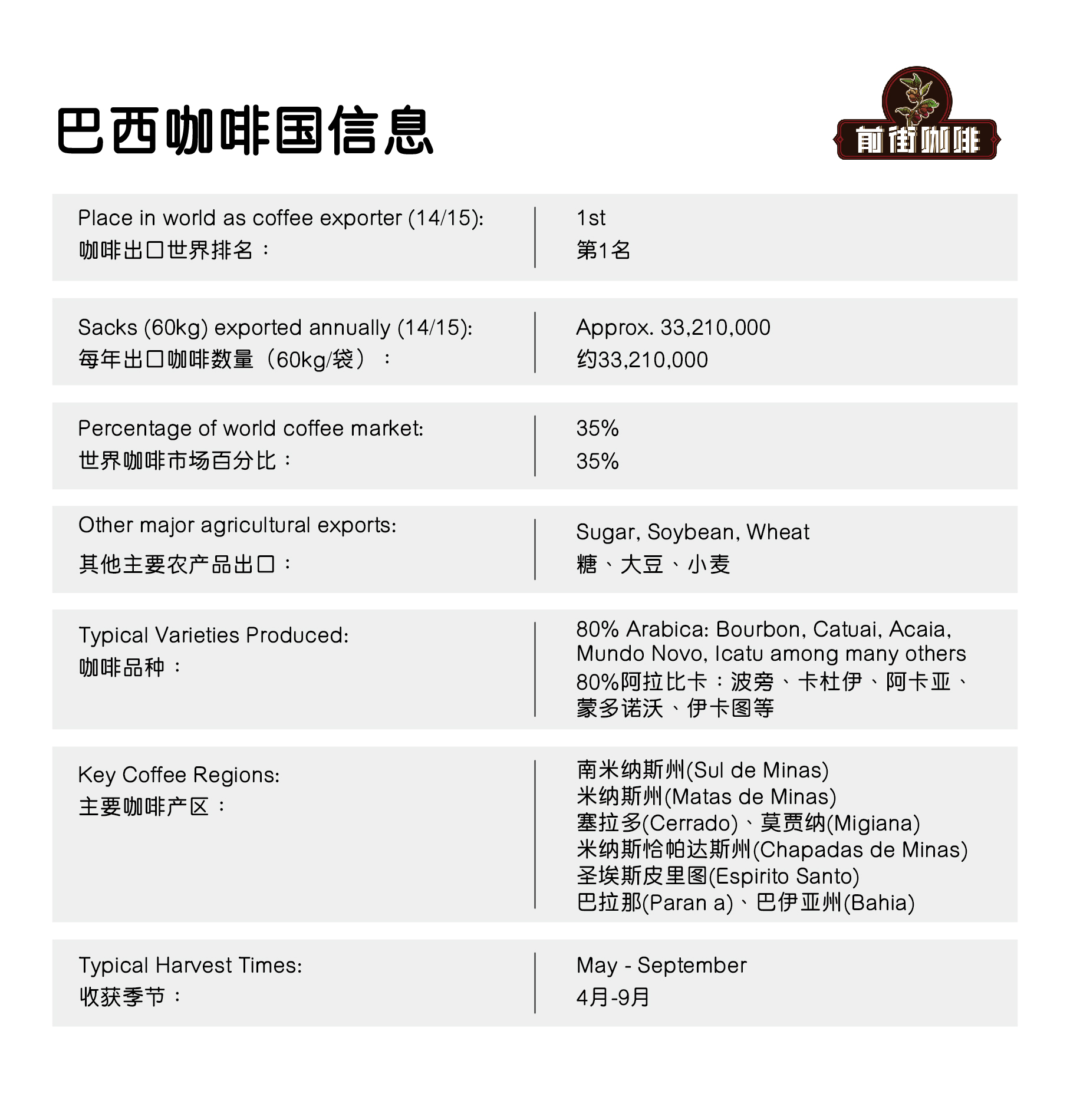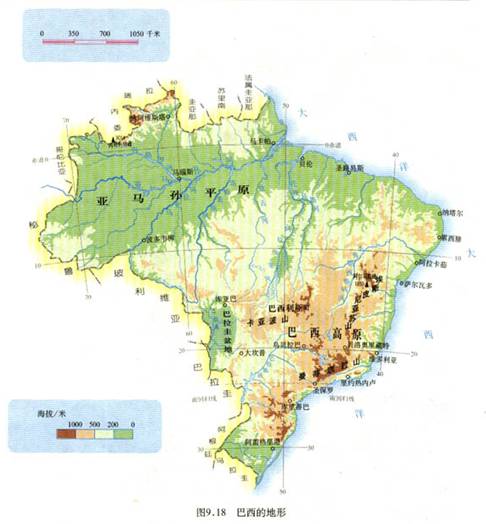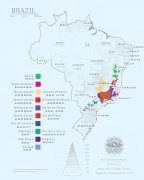Introduction to the history and treatment of Brazilian coffee beans the flavor and taste of red bourbon coffee beans
Brazil Coffee
Although Ethiopia is the country of origin of coffee, Brazil is currently the largest producer and exporter of coffee in the world, and it has been going on for more than 100 years. In the 1820s, the output of new coffee even accounted for about 1/3 of the world's coffee production. Such a large output makes people curious about the information of Brazilian coffee.

Brazil grows a wide variety of coffee, with about 70% of Arabica species. If Ethiopia is the hometown of Arabica, Brazil is the arsenal of improved varieties in the new world. The Cambinas Institute of Agriculture (instituto Agronnomico de campinas, IAC) in S ã o Paulo can be called the delivery room for new varieties. Kadu Ayi, Ituka, Asaya, Obata, as well as various forms of Kaddura, New World and other cultivated varieties all come from this.
Next, I would like to introduce this red bourbon coffee of Qianjie Coffee.
Qianjie Brazilian Red bourbon Coffee
Producing area: South Minas producing area
Variety: red bourbon, Red Bourbon
Treatment method: half-sun treatment
Altitude: 700-1250m
Flavor: the entrance has obvious sweetness, with a hint of lemon aroma, with a strong nutty flavor, the latter part has an obvious dark chocolate flavor, the overall feeling is more round.
The coffee beans on the front street come from Minas Gerais. The representative coffee producing areas of Minas Gerais are Syrador and South Minas, both of which are at higher elevations. Hirado is located in the west of Minas Gerais, a flat plateau at 750m-1200m above sea level. South Minas is a hilly woodland in 700m-1200m above sea level. Since 1999, South Minas has won the most manors in Brazil's Outstanding Cup bidding.

Brazilian coffee is grown at a relatively low altitude, so its acidity is low. The palate is mellow and round, with chocolate and nutty flavors.
The four most common treatments for Brazilian coffee are natural solarization, desizing, semi-washing and water washing, of which natural solarization is the most popular because of the relatively stable dry season.
The natural sun exposure in Brazil is different from the traditional Ethiopian sun exposure. What Brazilians call "natural sun" refers to the process of picking coffee rather than the traditional treatment process, because Brazilians allow coffee to fully absorb sunlight on the branches and fully mature.
Water washing and sun treatment are very common, so there is no need to repeat them too much. Today we will focus on Brazilian desizing and semi-washing.
What is the desizing treatment in Brazil? The desizing method was introduced to Brazil 25 years ago by Pinhalense, a well-known machinery and equipment manufacturing company. Desizing is the second most popular way to treat raw coffee beans in Brazil, and Brazilians like to call it "Cereja Descascado" ("Descascado" means "peel" and "Cereja" means "fruit"). In Central American countries, the desizing method is also known as "honey treatment". When using this method to deal with raw beans, the desizing machine is essential, and the coffee treated by this method is extremely sweet and unique in flavor.
The semi-washing method is easily confused with the desizing method, but it still has some uniqueness. The coffee treated by semi-washing method has a very mellow taste and high sweetness. this method requires the grower's operation technique and experience very high. if something goes wrong, the coffee will become difficult to swallow. Like the desizing method, people first use a desizing machine to desize the fruit, but the difference is that the semi-washing method requires the removal of as much mucous membrane as possible from the peel, pulp and surface layer of raw beans. In Central America, people wash the fruit directly with a washing machine after the fruit is desized, so this method is also known as "mechanical washing".
Important Notice :
前街咖啡 FrontStreet Coffee has moved to new addredd:
FrontStreet Coffee Address: 315,Donghua East Road,GuangZhou
Tel:020 38364473
- Prev

Introduction to the treatment and grading of coffee beans in Brazil the taste and flavor characteristics of Huangbourne in Queen's Manor
When it comes to Brazilian coffee beans, many people don't seem to have much impression, but Brazil is actually a very important part of making espresso beans. Brazilian coffee is the largest coffee producer and the most complete coffee production base in the world. it is slightly bitter and smooth in the fragrance. He is not only the largest coffee producer, but also the second largest coffee consumer.
- Next

Fermentation flavor and taste characteristics of Honduran sherry coffee bean whisky barrel and its production area grading standard
Honduras is the second largest exporter of coffee in Central America, and even if you look at the world, it can rank in the top 10. The taste of Honduran coffee beans is rich and mellow, sour and slightly sweet in the mouth, not sour or astringent in taste, full-bodied, very soft and long in sweetness. The balanced taste of Honduras made him
Related
- Detailed explanation of Jadeite planting Land in Panamanian Jadeite Manor introduction to the grading system of Jadeite competitive bidding, Red bid, Green bid and Rose Summer
- Story of Coffee planting in Brenka region of Costa Rica Stonehenge Manor anaerobic heavy honey treatment of flavor mouth
- What's on the barrel of Blue Mountain Coffee beans?
- Can American coffee also pull flowers? How to use hot American style to pull out a good-looking pattern?
- Can you make a cold extract with coffee beans? What is the right proportion for cold-extracted coffee formula?
- Indonesian PWN Gold Mandrine Coffee Origin Features Flavor How to Chong? Mandolin coffee is American.
- A brief introduction to the flavor characteristics of Brazilian yellow bourbon coffee beans
- What is the effect of different water quality on the flavor of cold-extracted coffee? What kind of water is best for brewing coffee?
- Why do you think of Rose Summer whenever you mention Panamanian coffee?
- Introduction to the characteristics of authentic blue mountain coffee bean producing areas? What is the CIB Coffee Authority in Jamaica?

